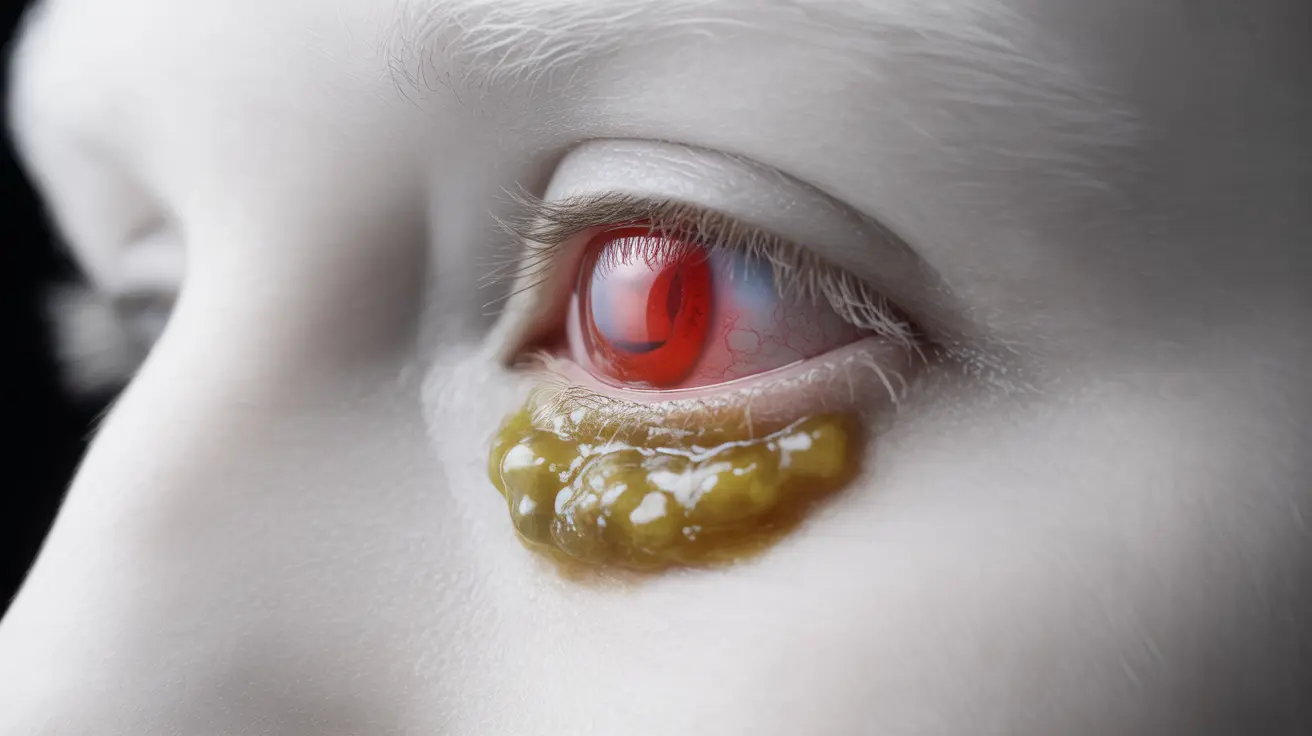Mucopurulent conjunctivitis is a specific type of eye infection characterized by inflammation of the conjunctiva (the clear membrane covering the white part of the eye) and the production of thick, colored discharge. This condition can affect people of all ages and requires proper medical attention for effective treatment.
While the condition may cause discomfort and concern, understanding its symptoms, causes, and treatment options can help you manage it effectively and prevent its spread to others. Let's explore everything you need to know about mucopurulent conjunctivitis.
Understanding the Symptoms
Mucopurulent conjunctivitis presents with several distinctive symptoms that help differentiate it from other eye conditions:
- Thick, yellowish-green discharge
- Redness in one or both eyes
- Crusty eyelids, especially upon waking
- Eye irritation or burning sensation
- Excessive tearing
- Swollen eyelids
- Sensitivity to light
Causes and Risk Factors
Bacterial infection is the primary cause of mucopurulent conjunctivitis. Common bacteria that can trigger this condition include:
- Streptococcus pneumoniae
- Haemophilus influenzae
- Staphylococcus aureus
- Moraxella catarrhalis
Several factors can increase your risk of developing this condition:
- Close contact with infected individuals
- Poor hand hygiene
- Contact lens wear, especially with improper cleaning
- Exposure to contaminated objects
- Weakened immune system
Diagnosis Process
Healthcare providers typically diagnose mucopurulent conjunctivitis through:
- Physical examination of the eyes
- Review of symptoms and medical history
- Evaluation of discharge characteristics
- Culture samples when necessary
- Ruling out other eye conditions
Treatment Approaches
Treatment for mucopurulent conjunctivitis usually involves:
Medical Interventions
- Antibiotic eye drops or ointments
- Artificial tears for comfort
- Regular cleaning of discharge
Home Care Measures
- Warm compresses to relieve discomfort
- Gentle cleaning of eyelids
- Avoiding contact lens wear until cleared by a doctor
Prevention Strategies
To prevent mucopurulent conjunctivitis and its spread:
- Practice frequent hand washing
- Avoid touching or rubbing your eyes
- Use clean towels and washcloths
- Don't share eye makeup or contact lenses
- Replace eye care products regularly
- Keep contact lenses clean and properly stored
Frequently Asked Questions
What are the common symptoms that indicate mucopurulent conjunctivitis?
The most common symptoms include thick, yellowish-green discharge, red eyes, crusty eyelids, eye irritation, and excessive tearing. You may also experience light sensitivity and swollen eyelids.
How is mucopurulent conjunctivitis diagnosed and what tests may be needed?
Diagnosis typically involves a physical examination of the eyes, evaluation of symptoms, and review of medical history. In some cases, your healthcare provider may take a culture sample of the eye discharge for laboratory testing to identify the specific bacteria causing the infection.
What treatments are most effective for bacterial mucopurulent conjunctivitis?
The most effective treatments include antibiotic eye drops or ointments prescribed by a healthcare provider. These are typically combined with proper eye hygiene practices and warm compresses to manage symptoms.
How contagious is mucopurulent conjunctivitis and how can I prevent spreading it?
Mucopurulent conjunctivitis is highly contagious and can spread through direct contact with eye discharge or contaminated objects. Prevention includes frequent hand washing, avoiding eye touching, using clean towels, and not sharing personal eye care items.
When should I see a doctor for mucopurulent conjunctivitis symptoms that don't improve or worsen?
Seek medical attention if symptoms persist beyond 24-48 hours, if you experience severe pain or vision changes, if symptoms worsen despite treatment, or if you have a weakened immune system. Prompt medical care can prevent complications and ensure proper treatment.




